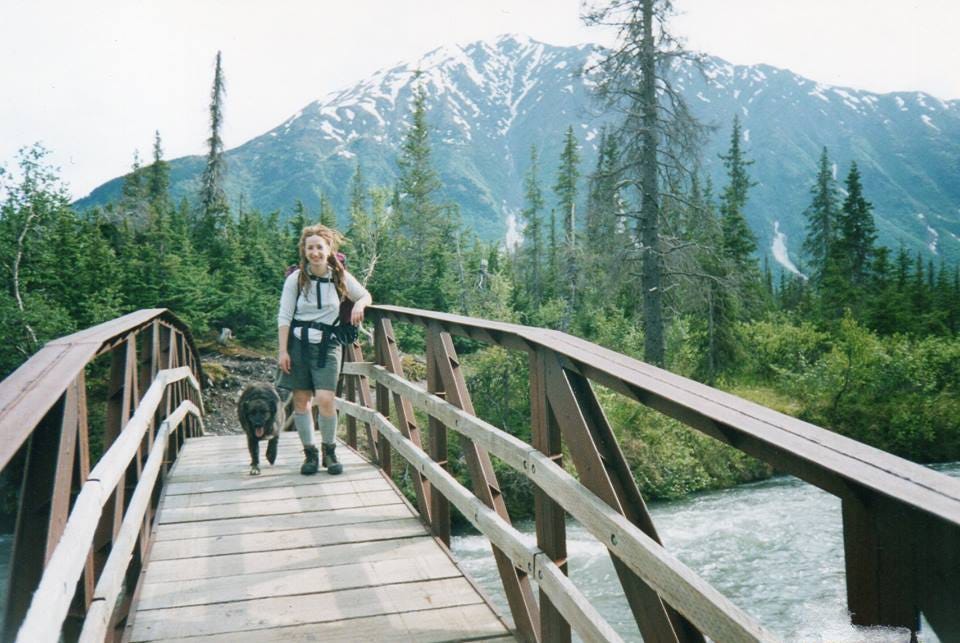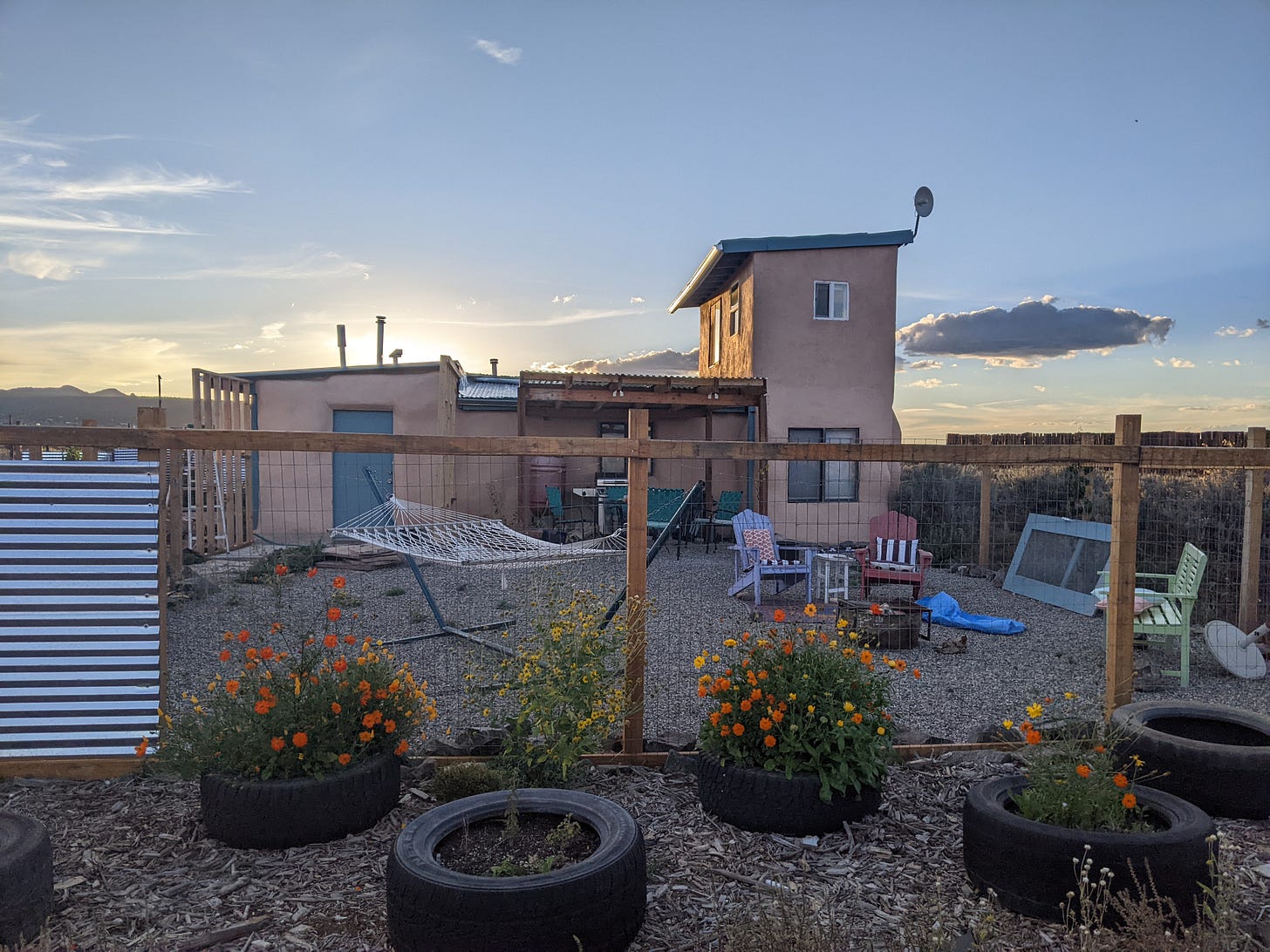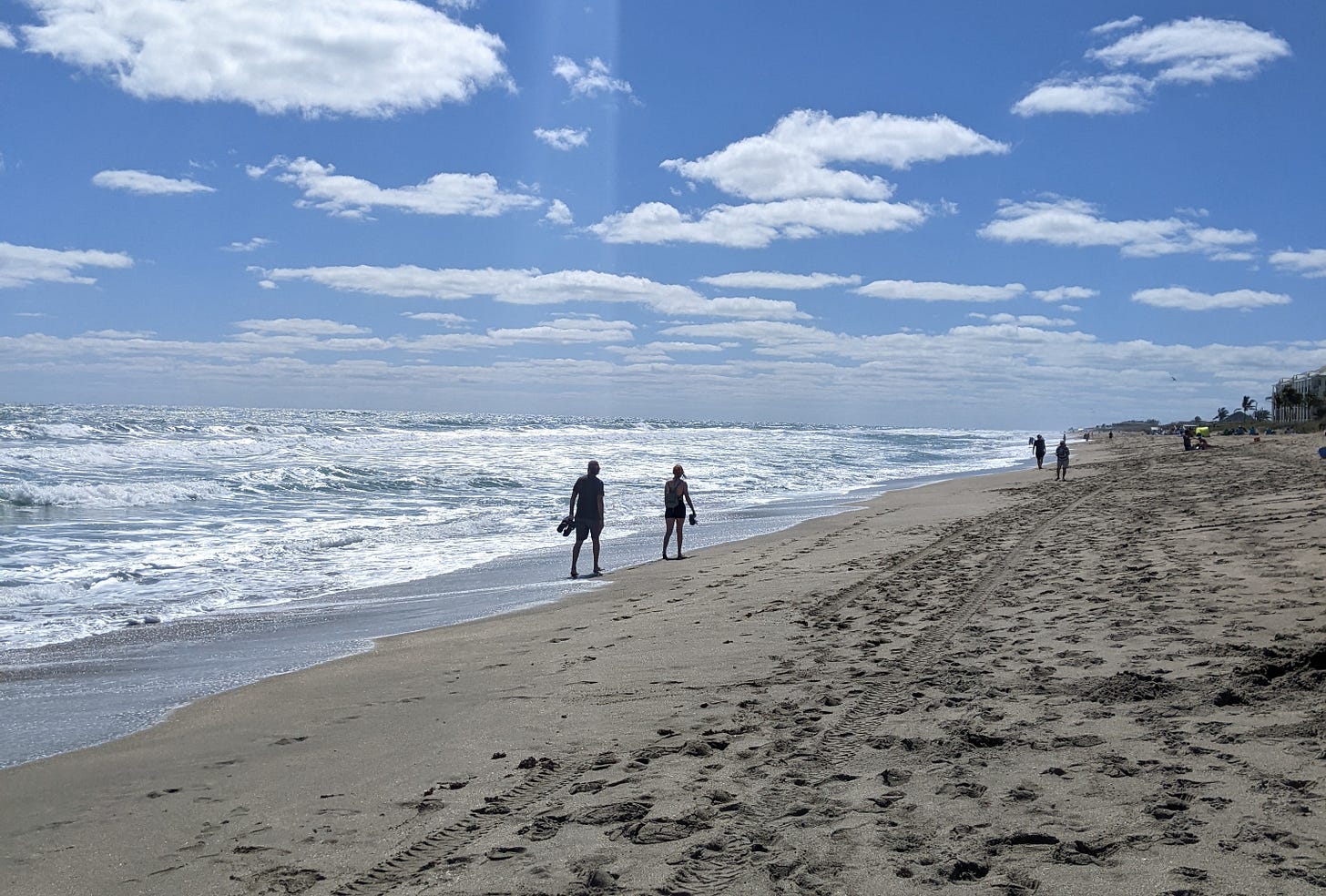How-To is a new sub-section of Our Uncertain Future that provides researched and/or instructional content.
If you want to live off the grid, you may want to take into consideration what state to do it in. Some people don’t have that kind of flexibility to live anywhere, but if you do it’s important that where you are is supportive of your lifestyle. And if you don’t have a lot of cash to invest, you especially want to find someplace cheap. I did a deep dive and researched a list to help you out.
I’m lucky that I ended up in New Mexico by chance. I had been living in Alaska when I met a handsome young man who wanted to marry me, but first he wanted to move back to the Mountain West to spend a couple of years with his ailing father. We landed in the Land of Enchantment and never left.
We lived off-grid in Alaska too, in varying capacities. Usually, we didn’t have indoor plumbing. An outhouse in the middle of Alaskan winters is intense. (The secret is to make toilet seats out of foam, so they don’t get cold.) We hauled water in 5-gallon jugs to our dry cabin and went to the laundromat to take showers for a quarter per every two minutes of water. I’m sure the prices have gone up since 2005.
Ultimately, Alaska was a little too far out for us, but we liked the rustic vibe and proximity to nature. New Mexico has a similar vibe. Interestingly, in New Mexico we have more access to wild spaces because they are within reach and easier to navigate. Alaska has a wild beauty that is far beyond human comprehension; it’s massive and amazing. Both states have indigenous populations that have lived continuously on the land without being pushed onto reservations and their living stewardship is palpable.
There is so much to love about New Mexico, such as the progressive politics, the gorgeous scenery and the diverse history and culture. Of course, there are negatives too; no place is perfect. But for us, the pros outweigh the cons. We especially love New Mexico because of the ease of living off the grid.
Living the Dream
Are you dreaming of moving off the grid? Do you follow off-grid influencers, read off-grid blogs and pin photos of off-grid homes? With the uncertainty of our economic, energy and climate future, many people are seeking a new sense of security not embedded in wealth. You can’t eat money. Money won’t shelter you when it rains. And our society is working harder to make less, leading to burnout. Off-grid living is a realistic alternative to stress, exhaustion and insecurity. If you can figure out how to make a living, be self-sufficient, or join a community sharing resources, you can basically move anywhere. But where?
Generally, living off the grid means living in rural areas. Put aside your narrow stereotypes of what rural people are like and realize that they aren’t so dissimilar from you, seeking a respite from modernity, appreciating a slower rhythm of life and a more minimalist lifestyle.
So, to help you out with your visioning and preparing, I have compiled two lists. The 5 Worst Places to Live Off the Grid and the 5 Best Places to Live Off the Grid. Let’s see if Alaska or New Mexico make the lists. I wonder if your state lands on one of these lists.
How to Choose the Right State For You
I made these lists based on the factors that I have learned from experience are important to easily living off the grid:
Cost of living, including taxes
Land prices
Regulations and Zoning Laws
Climate
State energy policies
Natural disasters
Ultimately, you want to choose states that align with your budget, weather tolerance, and ability to navigate regulations. For sustainability, prioritize regions with low barriers to renewable energy and water independence. You may also consider what you find aesthetically pleasing. I love mountains and so I live in a mountainous area. You may prefer oceans (though cheap land is usually not coastal), waterways, saguaros or deciduous forests.
When considering off grid living on a state-by-state basis, it is also important to look at the differences from county-to-county in cost and zoning laws, which I learned in my research can be vast. More desirable areas near urban centers across the board are going to be more expensive.
As a bonus, I took into consideration the natural disasters inherent to each region. With the rise in global warming, there is an increase in flooding, drought, wildfires, hurricanes, tornadoes and other climate risks that are beyond our control. Of course you don’t want to build your ideal off grid homestead only to see it destroyed.
So, I wish you luck my friend in living your dream and finding you planetary oasis. I hope this information helps move you closer to your vision. Stay wild.
Five Worst States for Off-Grid Living
1. Texas
While land is affordable in the Lone Star State, regulatory hurdles and grid independence complicate off-grid setups. The ease of living off the grid can vary widely depending on what region you are in.
Some areas in Texas mandate grid-tied utilities or specific construction standards, limiting alternative building methods like strawbale or tiny homes.
Some counties mandate solar panels be placed 100+ feet from property lines unless neighbors waive the rules, which they can refuse to do.
While SB 819, targeting utility-scale solar, died in the Texas House in May 2025, smaller projects still face bureaucratic delays for inspections or interconnection approvals.
Drilling wells often require costly permits and is challenged by groundwater scarcity in arid regions.
Solar tax credits exist, but off-grid systems rarely qualify, and property tax abatements for renewables are prohibited in some counties.
Texas leads the nation in natural disaster costs, substantially higher than other high-risk states. Flooding is the most common natural disaster followed by tornado-producing severe storms, which can be the most expensive, hurricanes/cyclones, droughts and heatwaves.
2. Alaska
A lot of people live off-grid in Alaska out of necessity, but that doesn’t mean it’s the best place for it. Sorry to all my AK friends!
While there is more than enough sun in the summertime, Alaska’s dark winters with limited sunlight make it nearly impossible to harness the sun half of the year unless you master battery storage.
Due to its far-out location, transportation of materials is 2–3x more expensive than in the contiguous U.S, so the cost of living is high.
80% of Alaska sits on thawing permafrost, which makes digging wells costly and repairing foundations necessary.
And though you can buy cheap land in wilderness locations off the road system, the cost of getting there might offset the savings.
Alaska is part of the infamous Ring of Fire on the Pacific. Earthquakes are their most frequent natural disaster with a magnitude of 8 or larger every 13 years. Alaska's natural disaster frequency and costs are relatively low compared to most other states, but its size and remoteness create unique emergency management challenges not found in other states.
3. Florida
Much of the land in Florida has strict zoning and building laws due to hurricanes, coastal zones and flood risks, complicating sustainability.
Florida’s intense air conditioning demands create challenges for off-grid sustainability.
Many Florida counties enforce minimum square footage rules for residential structures; often mandating homes be 1,200–1,800 sq. ft.. Tiny homes, shipping containers, or unconventional builds (e.g., under 500 sq. ft.) are prohibited in these zones, classified as “accessory dwelling units” (ADUs) and in most counties, they can’t serve as primary residences unless paired with a larger, code-compliant home.
Earthbag builds, straw-bale homes, or recycled buildings often face permitting hurdles due to non-compliance with hurricane-resistant building codes.
Over 50% of Florida homes fall under HOAs, which frequently ban, rainwater collection barrels, visible solar panels, vegetable gardens, livestock, or sheds.
Exception: Liberty County allows off-grid living in national forest zones with minimal oversight through the U.S. Forest Service Recreation Residence Program, a federal initiative permitting private cabins on public forest land under specific conditions.
As already stated, Florida is wrought with natural disaster issues with a frequency of 2 natural disasters a year and increasing, usually hurricanes and flooding.
4. California
California has a reputation for being laid back and eco-friendly, but unfortunately that might come at a cost.
Avoiding the coast and more desirable locations, you can find land that isn’t terribly expensive in California, however housing costs are still high. Construction costs are 2–3x higher than other states due to labor costs, materials and energy standards. There are great reasons for this (higher union wages, required eco-friendly materials, required solar installation) if you can afford it.
There are also permitting delays, development fees, design requirements, and high property taxes.
Rural counties like Mendocino ban tiny homes on wheels as primary residences, while others restrict composting toilets or livestock.
Don’t forget to take wildfires and drought into consideration. 45% of California is classified as high-fire-risk, mandating costly fire-resistant materials.
5. Illinois
Illinois presents significant challenges for off-grid living due to a combination of restrictive regulations, financial burdens, and environmental factors.
While state laws are relatively relaxed, many counties enforce minimum home sizes (e.g., 1,200+ sq. ft.) and restrict alternative housing like tiny homes or RVs.
Rural zones often mandate grid-tied utilities if available.
If you are interested in homesteading, permits are required for most livestock, with caps on animal numbers.
Illinois has the second-highest property taxes in the U.S. (double the national average).
Weather-wise, the state is prone to flooding, has cold winters, flash droughts and not many sunny days.
Illinois is considered relatively low-risk compared to other states for natural disasters. While the state does experience tornadoes, they are less frequent and less intense than in states like Oklahoma or Kansas.
Five Best States for Off-Grid Living
Keep reading with a 7-day free trial
Subscribe to Our Uncertain Future to keep reading this post and get 7 days of free access to the full post archives.




